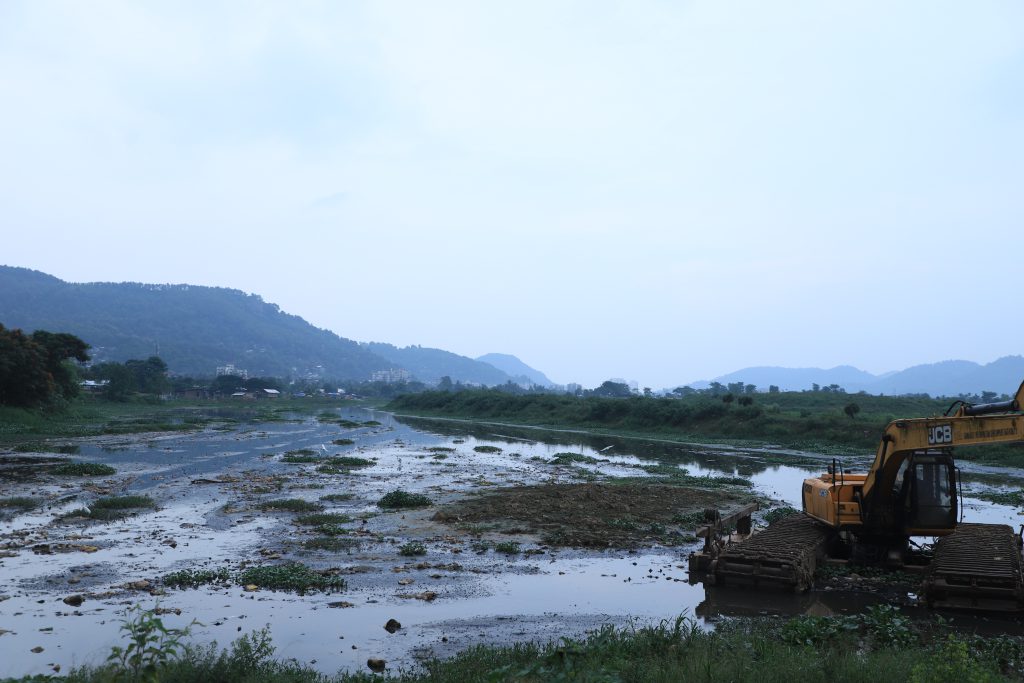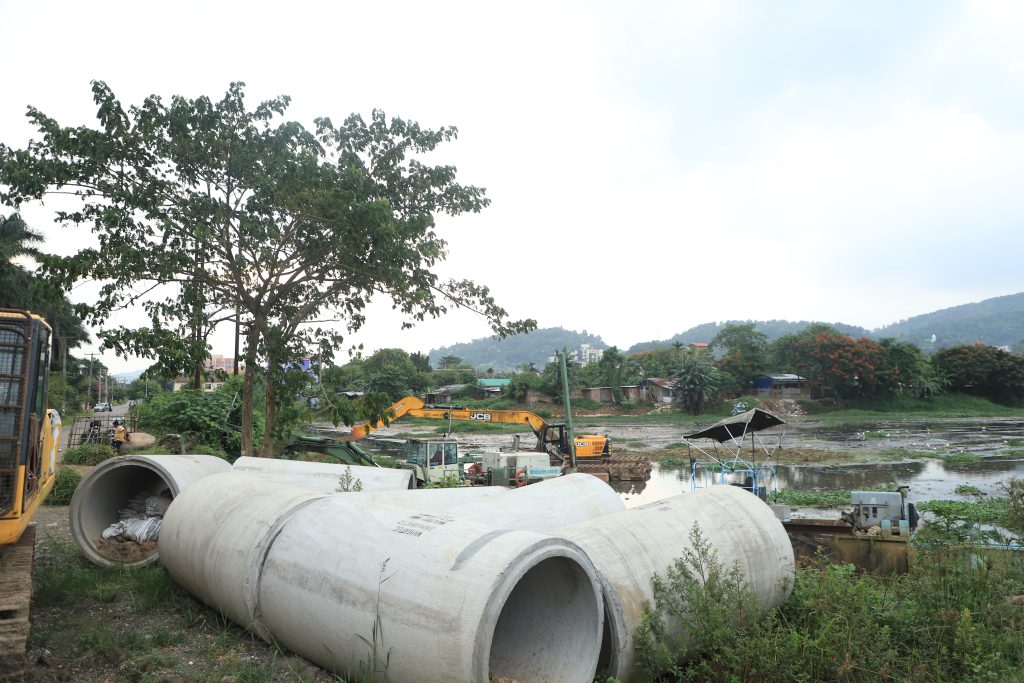
Urban flooding is one of the most recurrent hydro-meteorological disasters in Guwahati- mainly due to unplanned growth. In the absence of planned drainage system to take care of sewage and rainwater, Guwahati is heavily dependent on the existing natural drains and channels, and the wetlands.
Amongst the major factors leading to urban flooding are encroachment of these natural drain channels and wetlands, lack of proper drainage systems, and solid waste disposal in the drains and wetlands.
Of the number of wetlands surrounding the city, the Silsako Beel plays a significant role. However, massive encroachment and siltation have lessened the catchment area of this important wetland in recent years. The Guwahati Metropolitan Development Authority has currently taken up a project to restore the wetland to ensure mitigation measures for the city's flood to a great extent.
Despite the wetland having legal protection under the Guwahati Waterbodies (Preservation and Conservation) Act 2008, and other directions of the National green tribunals, the wetland has remained vulnerable to threats from urban encroachment and untreated wastewater inflows. Thus the beel area has shrunk considerably, and its water quality has deteriorated considerably.
The total area of Silsako Beel as per GMDA is 1964 bigha 4 katha 3 lessa. The wetland falls under three revenue villages-
As per the Kamrup Metropolitan District Administration, over 1500 households have encroached the Silsako Beel- over 1200 (approx) under the Hengrabari Revenue Village, 250 households (approx) are encroaching under Satgaon, and 120 (approx) under the No. 1 Mathgharia.
The catchment area of the wetland has reduced from 92 sq. km in 2014 to 50 sq km now.
Silsako Beel is the outfall area of nine major city drains and channels. Apart from Guwahati's combined drains, flood water, and sewage from Meghalaya also falls into this wetland.
"The water body has constantly been receiving silt, sewage and solid waste- both domestic as well as industrial, and the water quality has deteriorated beyond limits. The luxuriant growth of water hyacinths, and weeds were visible in the water spread area of the Beel. The deterioration in water quality has endangered the ecosystem, which finally flows to the Brahmaputra river," said Kausar Jamil Hilaly, Chief Executive Officer of GMDA.
Due to the highly polluted water quality, the Silsako Beel had come under the National Green Tribunal OA No. 673/2018 under the Priority-I category for restoration, and the Tribunal had ordered the state for an Action Plan for its restoration in 2019.
As such the Guwahati Metropolitan Development Authority has initiated the development of the wetland and its water quality based on the Action Plan submitted by the Assam Government to the Green Tribunal. The Detailed Project Report (DPR) for 'Rejuvenation and Bioremediation' of the Silsako Beel was awarded to M/s Alluvium Consultant Pty, Australia in May 2022.

In December 2021, excavation commenced in the Beel to increase its water retention capacity. GMDA along with the District Administration had also undertaken eviction drives to remove the encroachers from Silsako Beel.
"The excavated area of some 300,000 sq m is unevenly excavated at present, and the water body now has a storage capacity of nearly 1 million cubic meters (MCM) and has a clayey substratum with a shallow water table," informed the CEO.
GMDA presently has acquired over 250 bighas of the wetland and plans to conduct further evictions to reclaim at least 800 bighas of the original 1964 bigha.
A bypass channel has been created to segregate a portion of the wastewater flow emerging through various drains and the same was discharged downstream (to the northern side) of the Beel. The northerly discharge then flows into the Brahmaputra. As such NGT directed the treatment of the wastewater before it is discharged into the river.
The Rejuvenation and Bioremediation project of the Silsako Beel addresses complex issues like treating the wastewater to ensure standards-compliant discharge to the Brahmaputra, ensuring that the excavated area has a perennial water spread, and retaining the biodiversity elements of the Beel.
The project is thus a combination of 3 interlinked features- the original Beel channel approximately 2500m long, the excavated lake of 260,000 sq m spread, and bypass channels on the south, east, and north totaling 1400 m long approx.
GMDA aims to treat 10 MLD wastewater inflows to tertiary standards through natural bioremediation that will consist of cascades, coir log filtration, bacterial bioremediation, deployment of nano-aerators, and introduction of native fish species.
The water body has been excavated to increase its water retention capacity, and the flood water runoff into the Beel will be through a system of sluice gates. The Beel channel is proposed to be further widened and deepened.
"The high-water table with a clayey understratum ensures negligible percolation losses whereas the annual evaporation losses are neutralized by the annual rainfall. The lake is expected to stabilize in two years," stated GMDA.
The discharged waters would be retained by a couple of weirs to ensure significant pondages.
As proposed, beautification of the Silsako Beel includes the planting of riparian grasses along various sloping banks and embankments for stabilization and provision of riparian habitats, in addition to the plantation of about 7000 native trees and thousands of ornamental shrubs.

In the project, GMDA has additionally proposed the construction of two circular islands on the Beel, each of about 1 ha. The northern island will be a nesting island for birds. The southern island will be a recreational one with an interpretation and monitoring center, a 40m high viewing tower, a cafeteria, and recreational elements. Boat jetties, parking areas, walking or jogging, and cycling tracks would also be provided.
"The completed project would help Guwahati to meet its Sustainable Development Goals (SDG) targets and provide citizens with a blue-green asset with its manifold ecosystem services," stated GMDA.
The total project is estimated to cost Rs. 225 crores, with an additional Rs. 25 crores for 3 years maintenance. GMDA has reportedly already spent Rs. 9 crores to date.
ALSO READ : Chartered Accountants of the world called to be ambassadors of Brand India.